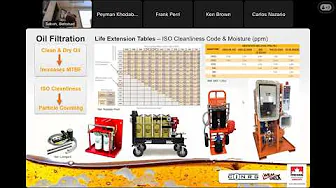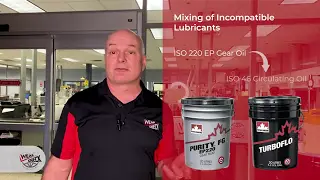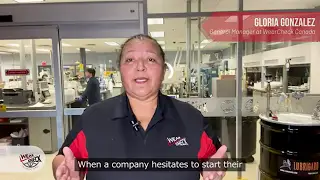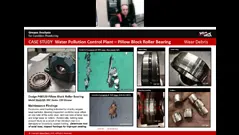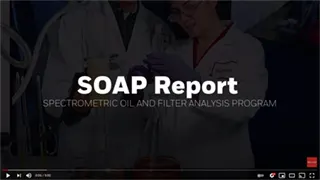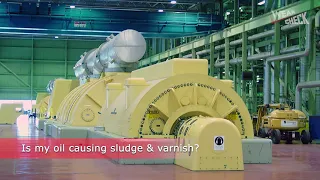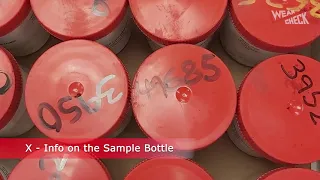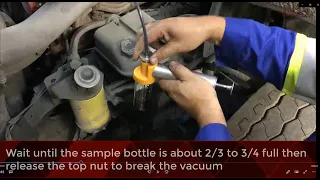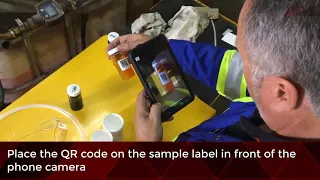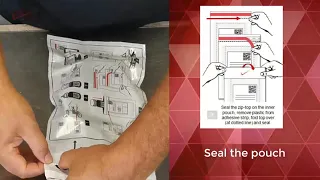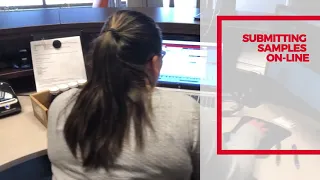Resources | Videos
WearCheck Knowledge & Expertise
WearCheck has the benefit of a global network of industry knowledge leaders. The following resources are drawn from hundreds of years of their experience in the oil analysis industry. We hope you find these resources helpful in your understanding of oil analysis and provide you with an oil analysis program of increased value.
Videos
Ghost Particles - Particle Counting Methods and the Impact on ISO Cleanliness Codes
The new method for particle counting, ASTM D7647, solves a number of issues associated with optical particle counters, including effects from water and soft particles in the oil. Solvent selection is key to effectively mitigating these issues. This presentation on Ghost Particles discusses recent research by Petro-Canada Lubricants and CINRG Systems Inc that demonstrate the effects of the different solvents used on soft particles, including certain oil additives.
WebCheck v2
[ English | Español | Française | Nederlands ]WebCheck v2, the new oil analysis management platform developed by the multidisciplinary team of experts at WearCheck International is an intuitive and simple platform that provides you with all the information, trends, and maintenance recommendations you need to keep your equipment in top condition. With a focus on reliability and efficiency, the WebCheck v2 platform takes your equipment maintenance to the next level, all from the comfort of your phone, tablet, or laptop.
Case Study: Distillery Decanter Centrifuge Bearing Reservoir
Bill Quesnel shares an interesting case study on a Decanter Centrifuge Bearing Reservoir at a distillery. In this video, Bill discusses how oil analysis was used to identify a potential issue with the bearing, which allowed the distillery to take corrective action before a catastrophic failure occurred. This case study highlights the power of predictive maintenance and the value of early detection. If you're interested in learning how oil analysis can help you optimize your maintenance program and improve equipment reliability.
When is the best time to start an oil analysis program?
Are you curious about when is the best time to start an oil analysis program? Gloria Gonzalez, the General Manager of WearCheck Canada, provides an insightful explanation. With her extensive experience in oil analysis, Gloria knows that early detection is key to minimizing equipment downtime and maximizing reliability.
Why WearCheck?
Why use WearCheck? WearCheck not only helps reduce the cost to own/operate assets, it helps reduce the time and cost end-users spend to manage and run their oil analysis program. With the implementation of asset tags, QR SIF’s and online/remote sample submission, total costs for a high level condition based monitoring program can be greatly reduced. This video highlights a few of the advantages of using the WearCheck oil analysis service.
Grease Analysis for Condition Monitoring
Traditional grease analysis involves testing to assess a grease products performance and quality. Employing today’s suite of new ASTM methods for lubricants, WearCheck has developed a range of grease testing programs to assess used greases and troubleshoot grease related lubrication issues. Bill Quesnel will discuss the various test methods employed for grease analysis in commercial oil analysis laboratories today and demonstrate the effectiveness of these new programs through a series of grease analysis case studies.
Honewell SOAP Report
The Honeywell Spectrometric Oil Analysis Program (SOAP) analysis report.
Varnish Testing by MPC
Membrane Patch Colorimetry (MPC) is a test that can determine the varnish potential of your oil by measuring the amount of insolubles present. Insolubles in oil eventually drop out of suspension and form sticky varnish and sludge in the system and on critical components which can lead to machine failure or outages.
How not to Submit Samples to the Laboratory
How not to submit samples to the laboratory","Common issues with samples submitted to the WearCheck laboratory are reviewed. Sample issues cause delays, and slow down the sample layout process. Please ensure that you are completing your sample forms, and properly packing your sample when sending them to the WearCheck laboratory.
ICP Analysis
An overview of Inductively-Couple Plasma (ICP) Spectroscopy or ICP Analysis which is a fundamental test in any oil analysis program.
How To Take Oil Samples from Fleet Machines
How to take oil samples from engines, transmission and hydraulic systems for fleet machinery
Submitting Samples with the Phone App
How to use the WearCheck Oil Analysis app to submit samples using an iOS or Android smart device (phone / tablet)
Submitting Samples to the Laboratory
How to properly prepare your samples for return to the WearCheck laboratory using the new QR-coded sample information forms and poly pack mailer.
Options for Submitting Samples On-line
The various ways that you can submit oil samples using on-line tools.
Videos Categories
Resource Categories
The new method for particle counting, ASTM D7647, solves a number of issues associated with optical particle counters, including effects from water and soft particles in the oil. Solvent selection is key to effectively mitigating these issues. This presentation on Ghost Particles discusses recent research by Petro-Canada Lubricants and CINRG Systems Inc that demonstrate the effects of the different solvents used on soft particles, including certain oil additives.

Bill Quesnel
WearCheck Canada
WebCheck v2, the new oil analysis management platform developed by the multidisciplinary team of experts at WearCheck International is an intuitive and simple platform that provides you with all the information, trends, and maintenance recommendations you need to keep your equipment in top condition. With a focus on reliability and efficiency, the WebCheck v2 platform takes your equipment maintenance to the next level, all from the comfort of your phone, tablet, or laptop.

WearCheck
WearCheck International
Bill Quesnel shares an interesting case study on a Decanter Centrifuge Bearing Reservoir at a distillery. In this video, Bill discusses how oil analysis was used to identify a potential issue with the bearing, which allowed the distillery to take corrective action before a catastrophic failure occurred. This case study highlights the power of predictive maintenance and the value of early detection. If you're interested in learning how oil analysis can help you optimize your maintenance program and improve equipment reliability.

Bill Quesnel
WearCheck Canada
Are you curious about when is the best time to start an oil analysis program? Gloria Gonzalez, the General Manager of WearCheck Canada, provides an insightful explanation. With her extensive experience in oil analysis, Gloria knows that early detection is key to minimizing equipment downtime and maximizing reliability.

Gloria Gonzalez
WearCheck Canada
Why use WearCheck? WearCheck not only helps reduce the cost to own/operate assets, it helps reduce the time and cost end-users spend to manage and run their oil analysis program. With the implementation of asset tags, QR SIF’s and online/remote sample submission, total costs for a high level condition based monitoring program can be greatly reduced. This video highlights a few of the advantages of using the WearCheck oil analysis service.

Bill Quesnel
WearCheck Canada
Traditional grease analysis involves testing to assess a grease products performance and quality. Employing today’s suite of new ASTM methods for lubricants, WearCheck has developed a range of grease testing programs to assess used greases and troubleshoot grease related lubrication issues. Bill Quesnel will discuss the various test methods employed for grease analysis in commercial oil analysis laboratories today and demonstrate the effectiveness of these new programs through a series of grease analysis case studies.

Bill Quesnel
WearCheck Canada
The Honeywell Spectrometric Oil Analysis Program (SOAP) analysis report.

Honeywell
Honeywell
Membrane Patch Colorimetry (MPC) is a test that can determine the varnish potential of your oil by measuring the amount of insolubles present. Insolubles in oil eventually drop out of suspension and form sticky varnish and sludge in the system and on critical components which can lead to machine failure or outages.

Bill Quesnel
WearCheck Canada
How not to submit samples to the laboratory","Common issues with samples submitted to the WearCheck laboratory are reviewed. Sample issues cause delays, and slow down the sample layout process. Please ensure that you are completing your sample forms, and properly packing your sample when sending them to the WearCheck laboratory.

Gloria Gonzalez
WearCheck Canada
An overview of Inductively-Couple Plasma (ICP) Spectroscopy or ICP Analysis which is a fundamental test in any oil analysis program.

Bill Quesnel
WearCheck Canada
How to take oil samples from engines, transmission and hydraulic systems for fleet machinery

Bill Quesnel
WearCheck Canada
How to use the WearCheck Oil Analysis app to submit samples using an iOS or Android smart device (phone / tablet)

Bill Quesnel
WearCheck Canada
How to properly prepare your samples for return to the WearCheck laboratory using the new QR-coded sample information forms and poly pack mailer.

Bill Quesnel
WearCheck Canada
The various ways that you can submit oil samples using on-line tools.



